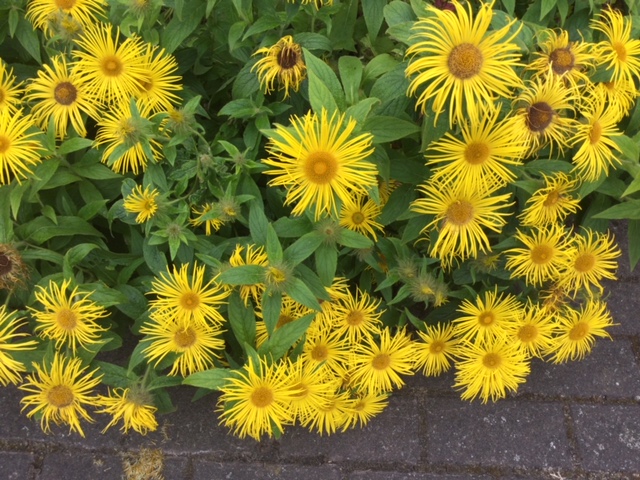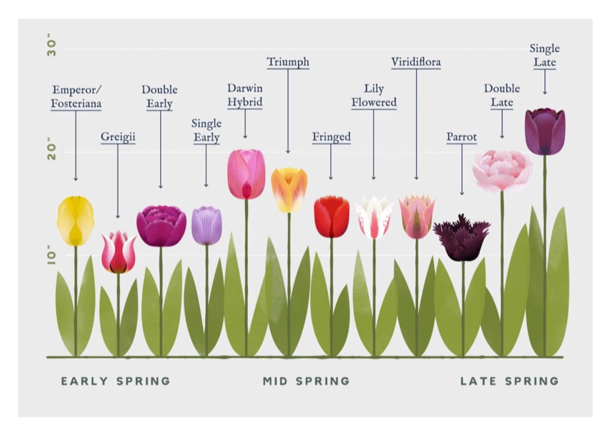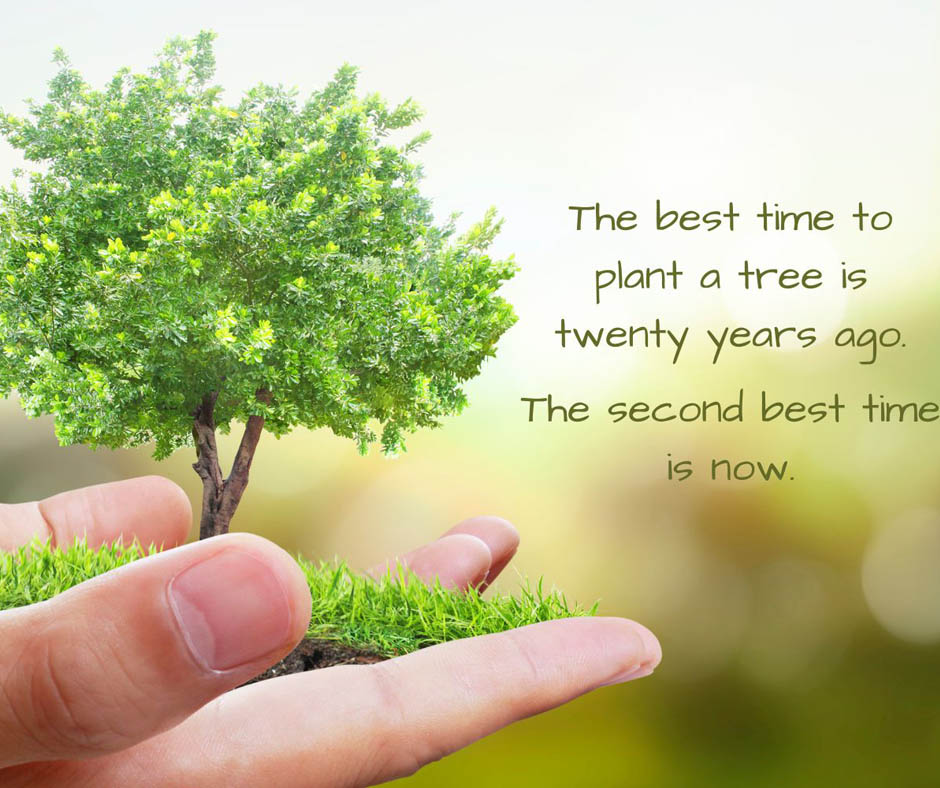September in our Gardens by Philippa Thomas

INULA, outside our gate.
It gets better every year and blooms from July to October.
After our recent record – smashing high temperatures, we now seem to be enjoying a more chilled interlude while our September rolls around. The length of our days is really beginning to narrow in. By the end of this month, sunset is around 7 pm.…. And although some say that the lockdown gardening boom is subsiding, given that many households are trying to cut back, garden centre owners report that business is still buoyant compared with previous years.
September is officially the start of Autumn.
Presently, we can see our gardens slowing down. Some of our plants are heaving a sigh of relief from our summer’s intense sun, they are visibly showing signs of wear and tear: They are almost telling us that they need just a little bit of extra care, transitioning into cooler temperatures. There are still so many superb flowering perennials, climbers and flowering shrubs to be savoured. Many flowers bloom right up until the first frosts. Dahlias right now, are putting on an incredible show and despite a reputation of horticultural marmite, orange flowers are big in fashion. Dahlias are presently shifting into high gear and from now until October, they will be overwhelming us with flowers of every shape, size and colour. This incredible bounty is one of the best things about growing dahlias. Once we have filled our vases in our houses, we need to start giving them away and really this is the best part of growing dahlias, sharing them.
So, as crazy as it may seem with our autumn fast approaching and knocking on our doors, now really is the perfect time to be thinking about our forth coming spring and planting spring blooming bulbs for a most spectacular display. Hence, bulb catalogues and ordering reminders are starting to pop up in our emails and through our letter boxes. If we want to grow anything unusual next spring, it makes sense to order early, (although, hold off planting, till later.) There are some fabulous new varieties of daffodils, narcissi, snowdrops, hyacinths, crocus, miniature iris, (reticulates,) etc, …. some already are grabbed up and gone. Best to plant hardy bulbs such as tulips and daffodils in a site that is warm and where they will receive plenty of sunlight. Other bulbs prefer more cool conditions, tiny bulbs planted in small groups / drifts seem to look best in borders, whereas big, bold impressive looking tulips, lilies etc, seem to look super in containers.

TULIPS
Shopping for tulips can be somewhat overwhelming with so many magnificent choices out there, it can be really hard to know where to begin. Keen tulip growers can make the tulip season last a very long time. First to bloom are Emperors, Greigiis and Double Earlies. Next come mid-season Darwin Hybrids and Triumphs. The second half of the tulip season brings Fringed, Viridiflora, Parrot and Double and Single late tulips.
So, our gardens in general are having their last throes of their last moment, producing divine petals and in some cases ripe edibles but secretly, they are again getting ready to be put to bed for the forthcoming months. Sedums which flower reliably late are still attracting butterflies and bees. A most beneficial thing to do is to leave some flowers go to seed such as Rudbeckias and Echinaceas, so that hungry birds will have some tasty seed treats to munch on during the winter. Now, too is the time to give some extra attention to shade loving Camellias and Rhododendrons, making sure their roots are well watered so that next year’s buds successfully develop, then wait to fertilise these beauties until their active growth period in spring, because if we feed them now, it generates late season new growth that’s vulnerable to damage from upcoming freezing temperatures.
Wonder, did you attend recently, ‘THE WINDS of CHANGE at SEA’ ? Meeting in The Fitzpatrick Castle Hotel, re Wind Farms and MPAs. This meeting was brilliantly attended and massively informative, re our incredible Flora and Fauna, Birdlife, Sea life and general marine protected areas.
August was the breeding season for many of our butterflies so we can expect to still see plenty of them on the wing. Butterflies like to bask where there is little wind that might harm their delicate wings. Nesting time too, should be finished by August, however if we detect some bird activity, lets hold off trimming our wild and woolly hedges for another little while. Then, how delightful it must be for those who can pick bunches of juicy grapes from a vine outside their back door……If we’re about to repair sun-damaged grass, let’s try to choose best buy lawn seed as it seems some suppliers are filling their boxes with different seed mixes to those purchased in 2021. This might include the cheaper and more readily available Estanzuela ryegrass, a quick- growing agricultural seed, which produces a sharp carpet of grass.
Isn’t it simply amazing that scientists have grown plants for the very first time ever in soil collected from the moon, Cress was grown in the soil samples collected from the moon in 1969- 1972. The plants germinated quickly but didn’t grow well so more work is needed.
Might Do, Maybe September Jobs.
Maybe, Time For Reflection…..Is this plant getting too big ? Does this area need more colour ? Am I spending too much time on maintenance….? Are my tools, techniques and magical ingredients all the best for a guaranteed success next year….?
- Taken now, cuttings have time to root and make good plants before winter.
- Best to water greenhouse plants early on in the day so the greenhouse is dry by the evening. Damp, cool nights can encourage botrytis.
- Prune climbing roses and rambling roses once they’ve finished flowering, (unless they are repeat flowering varieties, in which case leave them until later in the year.)
- Let’s turn those autumn blues into green fingers by saving as many seeds as possible. Collecting seeds isn’t too difficult at all. When seeds are ready to harvest, just collect them in a freezer bag or paper envelope. Dry them out for a few days by leaving them on some newspaper in a cool dry area and be sure to label seeds with the name of the plant and the harvest date. Possibly best to snip the seed head off and place the whole thing in an envelope. It seems best to harvest and store seeds in the middle of a sunny day, when moisture levels are at their lowest. Only harvest ripe seeds that look hard and brown.
THE TRANSFORMATION THAT AUTUMN BRINGS TO OUR GARDENS IS A SIGHT TO BEHOLD. ENJOY!


